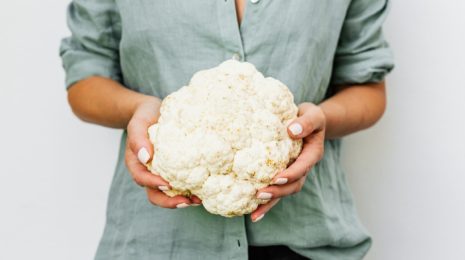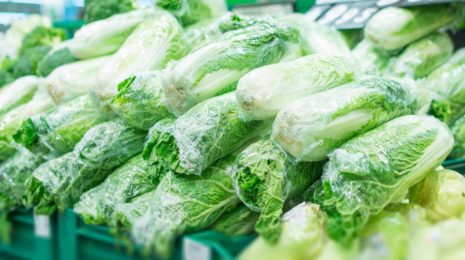How to freeze cabbage is one of the most effective and easy ways to store almost any food or vegetable. Cabbage can be frozen in many different ways, depending on your future cooking desires for this vegetable. Proper selection of a cabbage and its preparation for storage allow you to store the vegetable almost until the next harvest season while preserving both the useful properties and taste.
How To Freeze and Keep the Benefits of Cabbage

Fresh cabbage The first and most obvious step is to prepare the fruit, namely, to inspect it for damage, rot, or wilting. If there are any signs of spoilage or wilting, these areas should be cut out, and if we are talking about leaves, they should be removed. This step is mandatory not only for freezing but also for any other method of storage.
Among other things, it should be noted that freezing has a number of advantages over other storage options, such as:
- Cabbage can be harvested in convenient portions for later use;
- The vegetable retains its full range of useful properties throughout its storage life;
- Defrosting takes a relatively short time;
- The storage period is counted in months.
Step-by-Step How To Freeze Cabbage
The following steps can be used to freeze cabbage:
- Cut out places with spoilage or damage;
- Remove all the top leaves;
- Wash the fruit and soak it in salted water; this will disinfect the vegetable and get rid of any insects;
- Then, depending on the chosen method of storage, the cabbage either undergoes additional processing or is wrapped in several layers of film and sent for storage.

Choosing a Storage Tank
Depending on how the cabbage is processed, it can be stored in a suitable container. In most cases, glassware is suitable, but plastic containers can also be used. Reusable storage bags with a tight seal will do as well. In the end, you can also use ordinary cling film.
Methods of Freezing
One of the main advantages of cabbage is the wide range of possible treatments before storage. Each of which will be suitable for certain purposes or conditions. The most common methods are:
How To Freeze Cabbage Heads
The most cost-effective way in terms of labor is to prepare the fruit by cleaning and washing it, then drying or wiping it well. The core is cut off before freezing, and the cauliflower is wrapped in foil or placed in a bag and then put into the freezer.
Pros and Cons
- Minimal preparation time;
- Wide application;
- Takes up a lot of space in the freezer;
How To Freeze Cabbage Leaves
A method that is also suitable when you need exactly whole cabbage leaves, but need to save space. The algorithm for preparation is as follows:
- Inspect the cauliflower and remove any damaged leaves;
- Remove the core;
- In a suitably sized container, bring the water to a boil, then put the sprout in it and leave it there for 5 minutes;
- Take the sprout out of the water and cut off the softened leaves one by one, if the sprout is large, you will have to repeat the procedure several times;
- The finished leaves are best placed in a bag, and, having previously let the air out of it, close it;
- Place the prepared bag in the freezer.

How To Freeze Cabbage for Coleslaw
It is best when you need to save preparations for the preparation of first dishes. The order of preparation:
- Prepare the sprout by inspecting and removing any suspicious or damaged areas and leaves, then washing thoroughly;
- Chop in a convenient way, preferably with a straw;
- Decontaminate the shredded cabbage by placing it in a container with boiling water for 1-2 minutes; this will also allow the product to remain frozen longer;
- Thoroughly dry the shredded cabbage by wringing it out in a colander or letting it sit on a towel;
- Distribute the vegetables in storage bags; it is important not to stack too tightly; otherwise, after defrosting, the cabbage will lose density and structure;
- Place the finished bags in the freezer compartment.
Retention Periods
Properly prepared cabbage, once completely frozen, can be stored for several months to a year, depending on the temperature:
- From -1 to -5 °C– shelf life of not more than one month;
- From -6 to -17 °C – shelf life not more than 3 to 4 months;
- From -18 °C– shelf life of 8 to 12 months.
You can extend the above deadline by using the following tips:
Helpful Hints
It is not superfluous to pay attention to the following recommendations:
- Cabbage aimed at freezing and long-term storage should be chosen carefully; carefully examine the cabbage for damage and diseases;
- Broccoli and cauliflower must be blanched before freezing; otherwise, the taste and physical qualities (structure and color) will not be preserved;
- Any cabbage should be thoroughly washed and dried before being frozen.
- It is best to freeze in bags, minimizing the amount of air in the bags beforehand; airtight bags are preferable.
- It is also important to consider the intended future use of the cabbage after storage, which directly affects the preferred method of freezing;
- The process of freezing is best tolerated by young fruits.
- When storing, it is important to use tightly closed bags or avoid placing strong-smelling foods near the cabbage; otherwise, the cabbage will absorb their smell.
Video: How To Freeze Cabbage
FAQs
Cabbage is suitable for freezing: white cabbage, cauliflower, broccoli, and kohlrabi.
No, if the cabbage was defrosted, then you cannot freeze it again; otherwise, the internal structure and all the useful properties will suffer.
The best way to defrost is to simply move the frozen cabbage into a regular compartment of the refrigerator for a few hours.
Frozen cabbage is not good for making salads; it loses its ability to crisp.
It is optimal to use a package that holds one conditional portion for later use.









